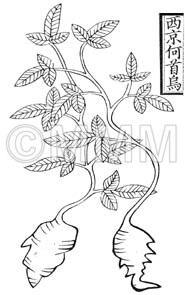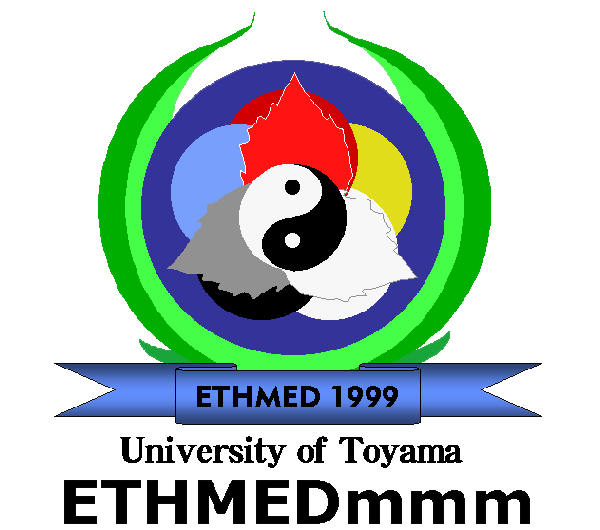Crude drug sample data base
※Click on the image to enlarge it.
Scientific information data base
| Common name | 何首烏, Heshouwu, Polygoni Multiflori Radix (JP18, CP2020), Polygonum Root (JP18), Fleeceflower Root (CP2020) | |||||
|---|---|---|---|---|---|---|
| crude drug image |
| |||||
| Original plant name | Polygonum multiflorum Thunberg, (Tsurudokudami) | |||||
| original plant image |
| |||||
| Family name | Polygonaceae | |||||
| Used part | tuber | |||||
| Quality for selection | The radixes looks like a string of beads. After cutting roots, the cross section of good Heshouwu is big, pale red and has a flower-like pattern. It has five deep longitudinal grooves on the external. (NI) | |||||
| Official compendium | JHMC (1989), CP (2020 ed.), JP XVIII | |||||
| Clinical application | As a tonic, aphrodisiac, blood replenishment and cathartic, Heshouwu is applied for insufficiency of essence and the blood, backache with weakness of the knee joint, pollution, leukorrhea, white hair etc. | |||||
| Medical system | Traditional Chinese medicine | |||||
| Drug effect in traditional medicine | Traditional classification | Drugs for nourishing the blood | ||||
| Beneficial effect | [Property and Flavor] Mild warm; bitter, sweet and astringent. [Meridian Tropism] Liver, heart and kidney meridians. [Actions] To remove toxin, disperse abscesses, interrupt malaria, and moisten the intestines to relax the bowels. [Indications] Sore and abscess, scrofula, itching caused by rubella, weak constitution caused by long-term malaria, constipation caused by intestinal dryness. | |||||
| Chemical constituent | Anthraquinones (*C1): Chrysophanol, Emodin Tannins (*C1): Tannin Stilbenes (*C2): 2,3,5,4'-Tetrahydroxystilbene-2-O-beta-D-glucoside Indole alkaloids (*C3): Indole-3-(L-alpha-amino-alpha-hydroxypropionic acid) methyl ester | |||||
| Chemical structure |
※画像をクリックすると、拡大して表示されます。 | |||||
| Pharmacological effect | Enhanced intestinal movement (water extract). Suppression of the cholesterol absorption from intestinal tract. Corticotropin like action. | |||||
| Classical reference (Chinese Herbal Classic "Zhenglei bencao") |  ※Click this image to see the actual image ※Click this image to see the actual image | |||||
| Disease | Lightheadedness, Bleary eyes, Vertigo, Ear buzzing, Heaviness and powerlessness in lumber and knee, Numbness, Alopecia, Premature gray hair, Spermatorrhea, Chill, Fever, Pyogenic dermatosis, Cervical lymphadenopathy, Itching, Constipation, Hyperlipidemia | |||||
| Formulation | Tokiinshi | |||||
| Related drugs | The root of Cynanchum auriculatum, C. bungei, C. wilfordii and etc. | |||||
| References | JP18: The 18th edition of the Japanese Pharmacopoeia. CP2020: Pharmacopoeia of the People's Republic of China 2020 edi. C1)The Encyclopedia of Wakan-Yaku with Color Pictures Vol. I, p 77. C2)Outline of Pharmacognosy, a Textbook, p 314. C3)Zhong Cao Yao,29,5(1998). | |||||
| Remarks | Baiheshouwu (白何首烏) is the root of Cynanchum auriculatum Royle of family Asclepiadaceae, C. bungei Dcne. (Jap. name: Koikema) , C. wilfordii Hemsl. and other species. | |||||
| Last renewal date | 2021/09/27 | |||||











